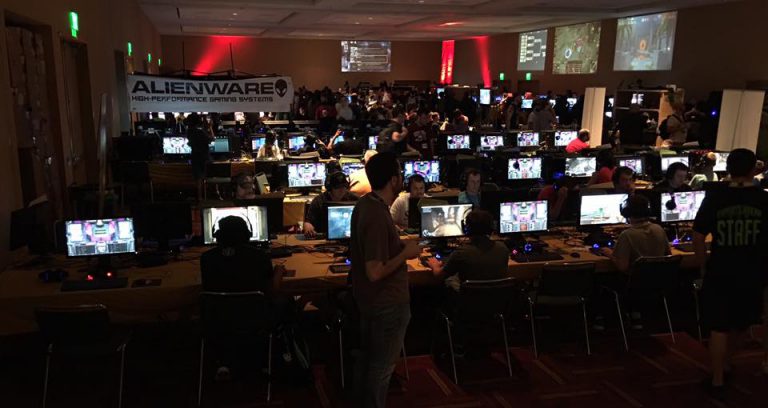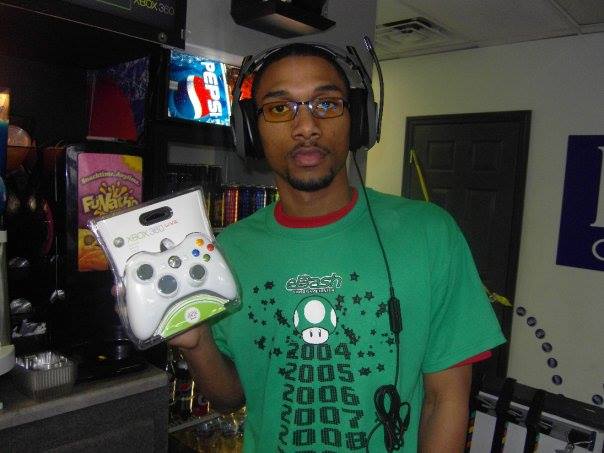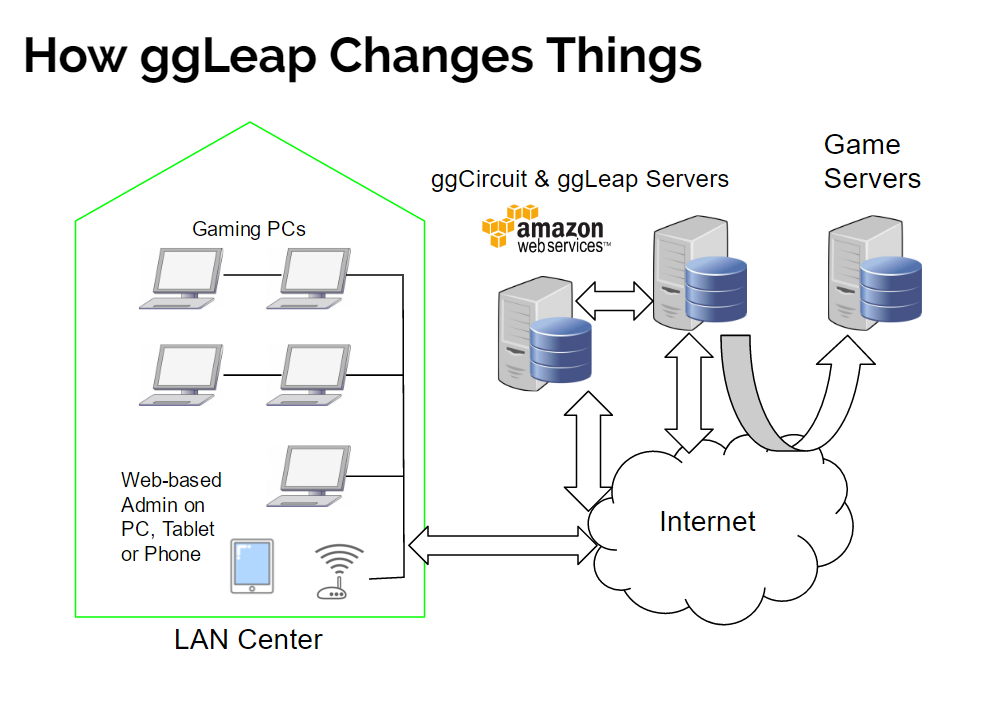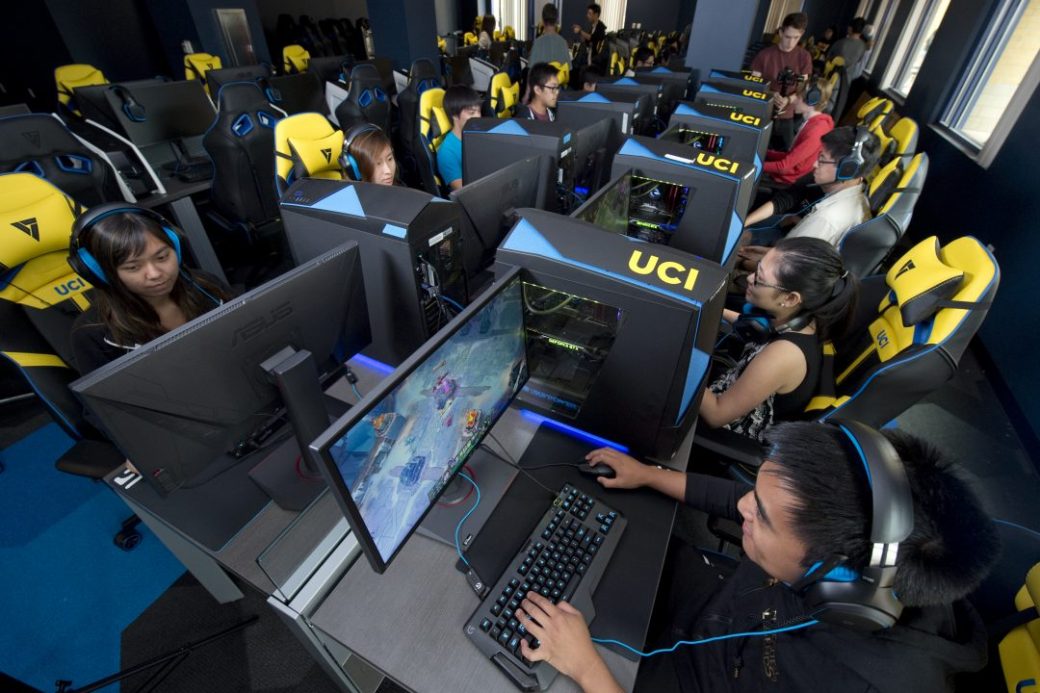Esports is NOT a sport.
Not even close.
That might seem to be a strange statement coming from someone who has spent the majority of my career building a business around competitive video gaming. But I refuse to continue to watch ignorant money being thrown at companies because they claim to serve the esports industry.
I am not talking about the old and lame argument about using a form of the word “sports” means the competition needs to be athletic. I am mad about how unorganized esports is compared to regular sports structures.
How is no one talking about the scary similarities of the investment into esports to the 90s dot com boom? Aren’t we supposed to learn from our past mistakes? I have to believe that the business people behind these investments are intelligent and wise, but if you don’t understand something, why are you throwing money at it blindly?

Esports is either backyard basketball or playing for the Indiana Pacers. There is no middle ground.
Why is esports not a sport? Very, very simple. It is not available to the masses. There is no path to make everyone feel like they have a chance to play at some kind of level. There is no level in-between playing random online matches and playing on a professional esports team. We are sorting out the “best” players according to online matches, twitch followers, youtube subscribers and the ability to have enough cash and free time to travel to try and be seen by a professional team.
That is not how sports should work. Let me take you down the path of a Hoosier kid chasing the dream of basketball.
(1) I grew up in Indiana, spent 4 years in Dallas, Texas while my father went to seminary, then moved back to Indiana in the 8th grade. I was a sports nut and was blessed with a decent amount of athletic ability. I was probably the most gifted to play baseball, taught to hit left handed by my father who spent countless hours playing anything I wanted outside in the backyard.
(2) When we moved back to Indiana in 1987 it was my 8th grade year (one year before high school here in Indiana) and I went out for cross country, basketball and baseball. As a kid who was the star on any single team I played until this point, I was devastated to barely make the basketball team, not getting much playing time and for the first time I was not in the spotlight.
(3) For those that know me, I am rather competitive. Not playing much drove me into a frenzy. I immediately identified as many possible paths that would lead to get me back into the starting lineup as quickly as possible. If you live under a rock you might not know that in Indiana, basketball is life. There are rules to follow for practice times and what the coaches could and could not do, but there were a ton of things that we knew we had to do to have a shot to play.
(4) Summer between 8th grade and freshman year was intense. In the summer every single day the gym was open for “free” play. I believe it was 3 PM until sometimes 8 or 9 PM depending on how many players were there. The first 10 formed teams and started playing. Those that arrived later formed teams to take on the winners. Sometimes there was enough teams waiting to open up the middle school gym (attached to the high school). Not only active players, but even older players came to the gym. We would have 14 year-old players trying to keep up with 25 year-old players, or in some cases the opposite.
(5) Then freshman year started and I found out that the gym was open before school each day. I didn’t have a way to get there, but asked the coach who lived past our country house farther in the country if he could pick me up. He pulled into our driveway every single morning that year, with his beat up old pickup. One of his sons was on the team and a year older than me and the truck had bucket seats.
(6) I remember that old beat up truck and have forgotten so many other things in my life. I sat on a folding chair between the two seats. The passenger door had to be tied to the chair with a rope, sometimes it would not get tied well and fly open around a curve. One of the headlights was rusted and pointed straight down, so it was easy to see them coming to get me from way down the road each morning.
(7) Every morning most players arrived around 6:45 or 7 to play for an hour, but because I rode with coach we got there just after 6. Coach suggested that I practice free throws and shots around different parts of the court and showed me a clipboard with shot charts I could use to track my progress. I loved it. Every single morning I shot 200 free throws and then took as many shots in different spots and tracked everything. When enough players arrived we scrimmaged again, sometimes right up until the bell or after and took a tardy getting to class.
(8) That freshman year our team was crazy good. I don’t remember how much I started or played much through the year but we were good. Our school was 400 students, while the other two high schools in town were 2000 students each. But the fun part was that while we were in high school the other schools were transitioning from 9th grade at middle school to 9th grade being in high school. We won the first 15 games of the year, most by a large margin, against schools that had a ton of resources and a big pool to draw from for players. I remember the TV news coming out after the 13th win and interviewing a few of us.
(9) That year for sectionals (end of the year tournament to lead up to the state championships) the coach did a crazy thing. He took 2 of the older seniors that didn’t play much and put them in street clothes and had myself and my buddy Jimmy on the freshman team dress varsity. We got to play in one of the blow out games and I remember hitting a couple threes. Our guys won the sectional and we went on to travel to the regional weekend. We lost but it was a real feeling of success.
(10) The story was similar throughout high school, we kept playing non-stop, anywhere we could travel and find games. We went to local 3v3 competitions and played in a lot of parks/playgrounds in the summer on the weekends, in the gym every day during the week.
(11) I hated weight training but I really wanted to be able to jump out of the gym and I remember running hills with weight vests. By my senior year I could touch the rim with my elbow. I remember when the coaches from college would show up and our high school coach would just line us up for “rim touch”. Think about layups without a basketball, except that after a few runs of seeing how high you could touch on the rim or the backboard those of us that could dunk would pull out the basketballs and start getting crazy.
(12) My high school career ended up on a tough loss in the sectionals when we were picked to go on much farther. But that then launched my college career. I knew I wasn’t good enough to play professional someday, so I picked a really good educational school to play that was based on Midwest Division 3 schools in a conference called the ICAC. I would say the ICAC would be competitive with most D2 programs. For example, Steve Alford, the Indiana University star who now coaches at UCLA, started coaching at Manchester in our conference.
(13) My college career ended much better for me with our team upsetting two higher ranked schools in the conference tournament and getting a bid to play in the NCAA Div 3 tournament. We lost a heart breaker in that tournament that I relive in my mind a few times each month to this day.

… I can throw a football over those mountains.
13 paragraphs about my life growing up a basketball kid in Indiana. Some washed up player talking like Uncle Rico from Napoleon Dynamite? Probably a little bit, but I do have a point. 🙂
Throughout my career, with a very similar story as anyone else who has played traditional sports, there were big milestones that we take for granted that DO NOT EXIST in esports.
Think about it… how many people are involved with traditional sports at some level that never make it to the pros? I think they say less than 1% of players that start in little leagues will ever play at the college level. The number is even smaller at the pro level. But those players did more than just shoot baskets in their driveway.
Why share 13 paragraphs about my path through basketball? I want to point out where esports has a chance to really expand to 99% of other gamers, this is where the REAL focus and investment should take place.
(1) Support from Parents, how do we get them involved like parents of sports kids?
(2) Available geographically everywhere, even through moving states/cities with your family you need to jump right back into the same scene you just left.
(3) Multiple paths for success and different training options, not just being the guy to play the game the most.
(4) Many options for play with a variety of competitors all year in something more than online ranked play, even off season finding groups of local players to practice and scrimmage.
(5) More adults getting involved to help kids get to practice/events and create a support system.
(6) Impressionable memories at younger ages, marketing companies would go crazy for reaching these ages.
(7) Ways for players to practice individual skills. I am surprised that more games do not have single player modes to practice certain skills that are crucial to the games they play. The only way to practice a certain scenario is to get lucky enough in a game to have that scenario happen.
(8) Community and Media support at lower levels. Make events and kids feel accomplished. Don’t just cover the giant events, plenty of media already covers those. Local newspapers are dying, why can’t they jump in and support this new movement and become relevant again?
(9) Organized levels of progression for local teams. Local teams against local teams, then regional teams, then state teams.
(10) Many options for competition. A true esport is one that can be played casually, recreational, with all ages, multiple formats and all year long.
(11) Recruiting for the collegiate level and again training programs to increase the player’s individual abilities.
(12) Just because games are “online” and can instantly be “national” that isn’t a good thing. Online you are one of 100 million League of Legends players. There is a reason that there are multiple college conferences and divisions. Everyone needs to find their standing in different skill pools.
(13) Everyone needs to be able to follow their path to their ultimate end of the story.
Here is where I think investments in esports should be directed.
Area 1 – Little League/Boys Club (ages 12 and under)
In esports if a kid is under the age of about 12 video games are looked at as an addiction or a problem. “Oh those parents are bad, they just let their kid play video games all day.” I know that is true in many, many cases depending on what game they are playing, but when was the last time someone said “Oh those parents are bad, they just let their kid play basketball all day”? How are we supposed to take “professional” esports seriously if we think that playing video games is bad?
In addition to the negative view of video games for kids, there is zero support and organization at this level. For every sports player that succeeded at some level, there were many instrumental people that helped them get to that point. Parents, coaches, clubs, schools, teachers, bus drivers and more. There has to be adults involved to organize the matches, teams, practices, travel, etc.
Area 2 – School Teams (ages 13-18)
The ability for any kid to have a chance to play. Everyone can go out for the team. You don’t need 4 other players to join a basketball tournament, you just need to try out and make your local team and the coach/manager takes care of the rest. Not only can every kid have a chance to play, but it is local to their school and the games are played locally against other local schools. Schedules are set, team travel is arranged.
Again at this level where are the supporting teachers, clubs, school corporations, state organizations, coaches, athletic directors and parents? What options does a 15 year old Call of Duty or League of Legends player have? They can just hope to get noticed in online ranked leaderboards? Tweet at their favorite esports organizations to try and get a DM to show them some montage videos?
Area 3 – Collegiate (ages 18-22)
Esports is starting to do better here, but please understand that it is not even 5% to where it should be right now. Schools are adding esports as more of a marketing tool than as a serious commitment to esports. I like what Lambton College is doing up in Canada, working towards adding a degree in esports promotion and management. Those kind of efforts help grow the programs into something that is sustainable.
However again we are looking at the major esports organizations at the collegiate level being mostly filled with club teams, not actual organized teams that have a support system from the school around them. It is mostly the players themselves trying to do everything and in the end, a player can’t make rational decisions on practice times, roster changes, travel budgets, strategy moves during a game, etc. It takes coaches, managers, directors, office staff, etc.
Area 4 – Professional (any age)
I hate the current state of professional esports. It is a pathetic marketing land grab and there is generally no focus put on what is the right thing for the players or the longevity of any of the leagues/games. For companies that own their own IP and run their own leagues they are the most stable, but all they are doing is trying to sell more stuff in their game. I know that professional sports is all about advertising and marketing, but before all of that is added on top, beneath the surface there is a basic concept that was made for the players.
Think about it this way. The NBA doesn’t “own” basketball. Basketball is a game that was created for players and teams to compete in a standard format. Rules were made and then distributed out to local clubs to add to their list of activities. NBA, NCAA, high school associations, Boys Club, AAU and any other organizations do not own basketball itself. Spalding doesn’t own it. They took a fun game and organized it. Guess what? Someone could make a brand new professional league for basketball today. It wouldn’t work because there really isn’t room for two professional leagues and it ruins the whole concept of reaching the top of the pyramid for a sport. But legally the NBA doesn’t own the game of basketball itself.
Game companies will control their own IP and obviously they want to make money from the game and the players. But start looking at making esports for your games relevant at many levels, not just the ones that you can generate 20M views in a weekend. You have the burden of creating all of the levels of competition if you want to sustain a “sport” around your video game.
I love competitive video games, we have been hosting tournaments for 13 years and have grown to support hundreds of centers around the world. But I hate using the word esports and giving investors and partners an idea that our industry is even close to being organized and compared with other sports.
Esports is not a sport.











